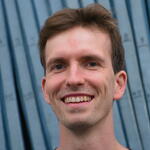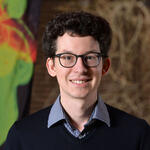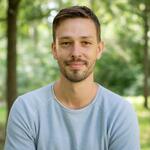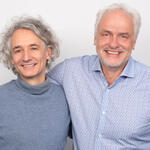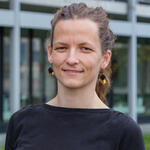Data science? Absolutely!
Half of mathematics students are women, and in her own research group, women are well-represented too. “It still shocks me a bit that we’re still talking about girls and women in computer science or math like it’s something unusual,” says Professor Jana Wolf. As a systems biologist, she and her team model cellular processes at the Max Delbrück Center. She’s passionate about giving students a behind-the-scenes look at her work – and at the many paths that lead into biomedical research. She wants girls to pursue their interests without being discouraged by negative comments. “Whether you end up choosing to study physics, biochemistry, systems biology, computer science, or math – is irrelevant,” she tells the 17 girls, aged 13 to 16, who joined the Girls' Day program in Berlin-Buch and Mitte. “We need experts trained in all of these disciplines!”
Lea Wöllner knows just how crucial that kind of advice can be. She's currently working toward her Master’s degree in molecular medicine in the lab of Dr. Markus Mittnenzweig. Before graduating high school, she was overwhelmed by the array of subjects she could study at the university level. The surprised reactions she received when she became interested in bioinformatics applications in medicine confused her even more. “But it’s actually super cool,” she says.
Coding to help Axolotl Amy
Axolotl Amy
Together with PhD students Aurora Elhazaz Fernandez and Meghan Kane, Lea Wöllner guided three girls aged 13 to 15 on a two-and-a-half-hour expedition into the world of single-cell biology – where data is absolutely essential. The scientists created a story: Axolotl Amy gets injured in a competition and loses an arm – the wound needs to heal, and the limb must regrow.
Step by step, they explained what happens inside the body. The right antibodies need to fend off viruses and bacteria, but at the same time, the immune system should not overreact. Their first coding challenge? Finding the right balance in the body. What types of cells does Amy need for her arm to regenerate? Pia, Marilou, and Fatima learned how to use marker genes to identify and annotate different cell groups. The task was no problem for these three young scientists.
Seven labs host students
The Girls' Day event at the Max Delbrück Center was coordinated by Gender Equality Officer Dr. Christiane Nolte and her deputies Dr. Grietje Krabbe and Dr. Ulrike Ohnesorge. This year, they were supported not only by researchers from the Mittnenzweig group, but also by teams led by Dr. Fabian Coscia, Professor Dominik Müller, Professor Jan Phillip Junker, and Dr. Leif Ludwig, as well as by Dr. Inga Patarcic from Research Data Management and Deborah Schmidt, who heads the Image Data Analysis technology platform. Each team developed interactive activities, and the data scientists gave the girls a glimpse into their everyday work.
At the same time, five boys took part in Boys' Day and visited an animal facility on the Buch campus. They got hands-on experience on adhering to strict hygiene protocols, and heard from animal caretaker Jannis Walter about how to care for mice in a research setting.
In the Mittnenzweig lab, Aurora Elhazaz Fernandez placed a petri dish of zebrafish embryos under the microscope. The fertilized eggs develop rapidly, some even within a single day. “They’re moving!” exclaimed Pia. The 14-year-old is a ninth grader at Heinrich-Hertz-Gymnasium in Friedrichshain, a school that specializes in math and science. The girls asked lots of questions – and Elhazaz Fernandez answered them all. “I’ll be back in three months,” Pia said. After a student exchange in France, she plans to intern in the Junker lab, where she hopes to take a closer look at the zebrafish.






